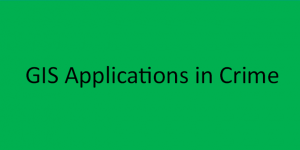Water is a scarce resource that we cannot live. Water comes from various sources like rain, wells, springs, mountains as well as ice. It is chemically formed from oxygen and hydrogen. Living things like human beings should thus do whatever they can to ensure proper management of this precious resource. Governments have for long proposed regulations on the use of water resources. It`s so essential that without it, life cannot exist. GIS is, however used in various activities involving water management. Water management using GIS is beneficial for monitoring water resources.
List of Uses of GIS in Water Resources
1. Storage and management of geospatial data: Geographic information Systems keep data and records about water sources. The data collected about water resources is stored on servers in different parts of the world. Some of the information is usually as a result of processing done on data collected by GIS. Huge amounts of data related to water resources can thus be stored for shared access with the help of GIS. Big externally launched geospatial satellites that are always on motion and rotating near the earth’s atmosphere are integrated with GIS and then used to help in inter-continental data and information dissemination. The satellite provides wireless data access to all base stations that request for the geospatial data. Most Geographic Information systems also offer cloud-based platforms. This means that geospatial centers in any part of the world can have access to data stored in any of the GIS servers. This pervasiveness and flexibility of data and information access is part of the applications or uses of GIS.
2. Hydrologic management: Studies on the water have shown that water is in most cases under motion, or changes its state and pressure with time. GIS comes to play a big part in keeping track of these water conditions. Hydrologists are thus among the biggest beneficiaries of Geographic information systems. Various studies on the water can be accomplished using well-engineered GIS. Hydrogeology, for example, is a discipline that investigates groundwater together with its storage, occurrence, and motion characteristics. The nature and characteristics of water stored underground or one which is on the surface either stagnant or in motion can be entered into GIS as data, stored and retrieved for future processing by the geographic Information System.
3. Modeling of groundwater: Groundwater modeling involves the hydrologists trying to understand groundwater behavior and characteristics. Bearing in mind the scarcity of water so much study can be done to protect water catchment areas. GIS can also help in the creation of models and designs to help utilize underground water responsibly. Soil properties and other geographic features are natural to investigate using GIS in relation to ground water. Digital images on groundwater can then be created, for example, by the use of magnetic fields during investigations and case studies.
4 Quality analysis of water: Not all water that exists on earth is safe for consumption by human beings or animals. Taking unsuited water can lead to adverse health conditions. Through GIS, studies on a slope, drainage features, and land utilization patterns can be used to predict whether the water in a given area is safe. Due to the ability of GIS to handle large amounts of data sets, sample data can be processed, stored as well as reports generated. These reports can be used by the relevant organization or even the government to make future study and regulations on water and to determine whether the water is safe for human consumption.
5. Water supply management: As we have seen earlier rain is a handy resource that no government or individual can afford to waste. Water supply pipes are laid on the ground and can be monitored on a real-time basis. Leaking water system components can also be identified and fixed on a real-time basis, which is much possible due to the integration of supply systems with GIS.
6. Sewer system management: Most of the human waste in most parts of the world are treated and conveyed to water bodies. However, strict and accurate supervision of sewer lines must be periodically made. Failure to manage the sewer system well can lead to diseases outbreaks that lead to degrading the country’s economy. GIS has also played a commendable role in sewer system management. Treatment of sewage can also be done with the help of GIS. Proper and mapping techniques that are delivered by these information systems on sewer lines are also important as they prevent damaging waste pipes during construction of structures like buildings, roads, railways among many others.
7. Stormwater control and Floods disaster management: During floods and storms, it is most likely that water will accumulate in places inhabited by human beings. This can prove challenging for the rescue team to go into rescue operations with little information about the flooded areas. Geographic information System has to help emergency rescue teams to their services safely and professionally. Thus in such instances of flood disasters and harsh weather condition, GIS can be used to give statistics on affected areas, enable the government to plan evacuation as well as can be integrated with weather forecasting systems to offer an accurate prediction and decision making. Aerial views and simulation of the floods can also be made using special system components and tools that rely on Geographic Information Systems.




John Mepukori
25 Nov 2021Brief and clear work well done.
Stella Mutuo
22 Oct 2022Thank you very much
Abdul sani
31 Jul 2023simple and direct to the point
Chemaa
9 Nov 2023This was very precise, thank you.